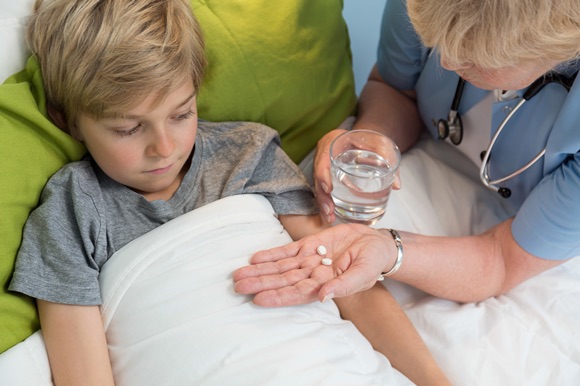A study published in the Journal of Pediatrics reveals some alarming statistics. An average of 63,358 children under age six yearly suffered out-of-hospital medication errors that were reported to poison control centers in the period 2002-2012. One child every eight minutes receives the wrong medicine, the wrong dose or a duplicate dose of their medicine. Infants experienced 25 percent of all the errors.
The responsibility for giving children under age six a prescribed or over-the-counter medication rests with the parents or other caregivers. The instructions for children’s medicines can be complex, with both frequency and dose dependent upon the child’s age and/or weight.
In the study, some 27 percent of all the reports over the eleven year span were due to the child having received the medicine twice. Other errors included giving the wrong medication or giving the wrong dose. The vast majority of reports to the poison control centers involved just one medication. Over half the reported errors were for the administration of pain relievers or cold medicines.
Fortunately, nearly 94 percent of all the instances were able to be handled outside a health care facility. Sadly, 25 of the 696,937 children did die as a result of the error.
More and more medications now come with a dosing tool, a cup or measuring spoon. These will usually have marking that allow the parent to determine the correct dose for their child. The study, however, notes that the written instructions for use may be confusing. In particular, the use of fractions and decimals may make dosing less clear rather than more accurate.
Recommendations exist that all measurements in medication instructions be standardized with the use of the metric system. The use of leading zeros before a decimal point is helpful while trailing zeros are not.
Preventing double dosing of children with their medicines is more difficult. In fact, changing the medication to one with a lower toxicity may reduce the ill effects of a double dose though it will not reduce the incidence.
Highlighted in the study is the reduction in errors in the administration of cough and cold medications that has been seen since 2005. The Food & Drug Administration, along with the American Academy of Pediatric and others, has been educating physicians and parents that the effectiveness of such medications has not been proven. In addition, side effects to the medications were common. Use of such medicines has dropped thus reducing the number of errors.
The authors note that low-literacy and Spanish speaking caregivers have not benefited from approaches that involve increased health care provider communication about dispensing children’s medicines. This is an area they believe should be further addressed.
The study is an undercount of actual medication errors, the authors state. They looked at reports to poison control centers. Errors that are reported to physicians, clinics or emergency departments are not included.
Adults giving medications to children should always remember that terms such as teaspoon have a very specific meaning in the medical world. The spoon in the silverware drawer that is commonly called a “teaspoon” is unlikely to accurately hold one teaspoon of medicine. Adults should also find a way that they can record when they give a medication, such as some sort of calendar, to prevent double dosing.















